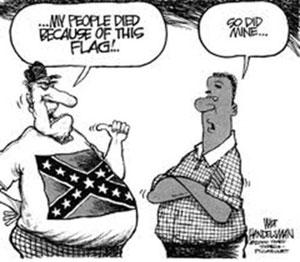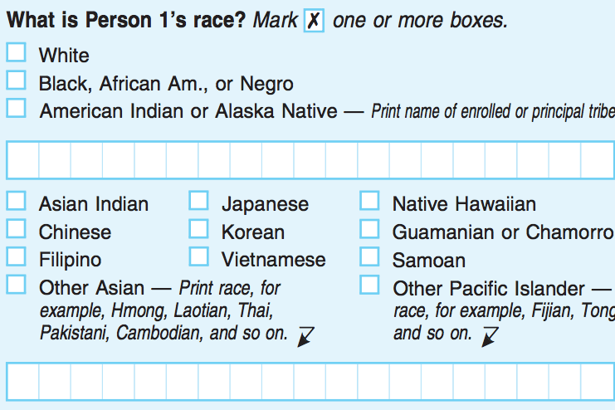39 racial and ethnic labels
NOT-OD-15-089: Racial and Ethnic Categories and Definitions for NIH ... The Revisions to OMB Directive 15 defines each racial and ethnic category as follows: American Indian or Alaska Native. A person having origins in any of the original peoples of North and South America (including Central America), and who maintains tribal affiliation or community attachment. Asian. ucc.nd.edu › self-help › multicultural-awarenessOvercoming Racial Stereotypes - University Counseling Center Attending churches, plays, concerts, and movies that celebrate diversity will also broaden our worldview. As we gain more awareness and knowledge about racial groups, not only will our racial stereotypes lessen, but we will also become better equipped to educate and challenge others about their racial stereotypes.
PDF What's in a Name? Understanding the Racial and Ethnic Labels Among ... For individuals in the African diaspora in particular, racial and ethnic labels carry a deep historical legacy with contested means of ownership. With terms from "Colored" to "Negro" to "black" and to "African American," the evolution and development of these labels communicate moments and attitudes in history.

Racial and ethnic labels
Reducing Black Americans to Racial Labels Enables the Left's Agenda The politicization of race, and the formal incorporation of racial and ethnic labels in American government and law, is itself a victory of the left. Reducing any human being to a racial and ethnic... openstax.org › books › introduction-sociology-3e11.1 Racial, Ethnic, and Minority Groups - OpenStax For example, ethnic groups such as Irish, Italian American, Russian, Jewish, and Serbian might all be groups whose members are predominantly included in the “White” racial category. Ethnicity, like race, continues to be an identification method that individuals and institutions use today—whether through the census, diversity initiatives ... Formal Labeling, Deviant Peers, and Race/Ethnicity: An Examination of ... The present study examines racial and ethnic variation in the intervening effects of deviant peers on the relationship between receiving a formal label and subsequent deviance.
Racial and ethnic labels. A Complete History of Census Race Boxes, From 1790 to 2010 - Bloomberg.com Over the last 200 years, as the Americans became more and more diverse, the little boxes on the U.S. Census Bureau forms that attempted to classify people by race multiplied. A new interactive... Ethnicity and Race: Overview - Palomar College Race and ethnic group labels in America are not clearly based on criteria that everyone understand, agree with, and can easily use. As a result, someone else may label you in a way that you consider inaccurate and very offensive. This can instantly create a barrier to open communication even if the slight was unintended. Ethnic Labels, Latino Lives — University of Minnesota Press Ethnic labels and labeling are difficult subjects to handle not only for the layperson in U.S. society, but for scholars as well. Professor Oboler attacks with guts and creativity the problematics surrounding the construction and re-construction of Hispanic/Latino identities, meanings, and social values and consequences, both positive and negative. Racial, Ethnic, and Minority Groups | Introduction to Sociology ... In the past, theorists have posited categories of race based on various geographic regions, ethnicities, skin colors, and more. Their labels for racial groups have connoted regions (Mongolia and the Caucus Mountains, for instance) or skin tones (black, white, yellow, and red, for example).
Growing up with systemic racism in the USA - The Lancet Child ... Racial awareness is the understanding of the racial climate in wider society, she explains, whereas racial identity development is gaining one's own personal identity within the racial culture, promoted mainly by lived experiences. Developmentally, recognition of phenotypic differences is found to begin in infancy. The Changing Racial and Ethnic Composition of the US Population ... The trend toward greater racial and ethnic diversity reflects the effects of immigration and differential fertility. The share of non-Hispanic whites drops by more than 20 percentage points—from roughly 84 percent of Americans above age 65 to just 61 percent of Americans below age 30. One graphic traces how racial and ethnic labels in America have changed ... One graphic traces how racial and ethnic labels in America have changed since 1790 (United States Census Bureau) With discussions about racial identity in America as heated as they have ever been,... Racial Category Terms - Race and Pedagogy The labels and definitions of racial and ethnic categories vary across history, societies, and even situations. Presented here are common terms used at UW-Madison, as well as some clarifications about racial and ethnic terms in the U.S. context. Terms at UW-Madison "Students of Color" There are different racial and ethnic minority groups on campus.
Understanding Ethnic Labels and Puerto Rican Identity The poem "Ending Poem" by Rosario Morales and Auroa Levins Morales contains a special blend that characterize Puerto Rican identity in the U.S. The poem reveals an inner struggle to find a concrete classification in terms of cultural and historical identity. The Morales (mother and daughter) reject any preconceived category and search for ... Social Identity and Preferred Ethnic/Racial Labels for Blacks in Canada ... Although Black was the most preferred label, the following four types of preferred labels were identified: Black, Africentric, Caribbean, and Canadian. Different label preferences were associated with different measures of social identity. Issues of social identity and ethnic/racial self-designation for Blacks in Canada are discussed. Support organizations & campaigns that serve: various racial/ethnic groups various racial/ethnic groups. Creating a world that is more inclusive of various racial and ethnic groups will require a range of reforms and solutions—from personal actions to policy reforms and community solutions. Here are some of the leading organizations that are at the forefront of creating a more inclusive and equitable world. Consider ... Racial and Ethnic Identification, Official ... - NCBI Bookshelf Race and ethnicity are words that carry heavy intellectual and political baggage, and issues surrounding racial and ethnic identities are often contested within and across groups. The debate over racial and ethnic categories prior to the 2000 Census is one of the most recent, but by no means the only, example of these contests.
PDF Do labels matter? Attitudinal and Behavioral Correlates of Ethnic and ... Ethnic and Racial Identity Choices . 157 . SPRING 2009 ~ VOLUME 27, NUMBER 2 . becomes racially labeled as Asian. This adds to the confusion over ethnic and racial identity from both within and outside of Asian American communities and may have an impact on the use of ethnic and racial identity labels.
› pmc › articlesEthnic and Racial Identity in Adolescence: Implications for ... Ethnic labels and ethnic identity as predictors of drug use among middle school students in the Southwest. Journal of Research on Adolescence, 11, 21–48. [Google Scholar] Marsiglia FF, Kulis S, Hecht ML, & Sills S (2004). Ethnicity and ethnic identity as predictors of drug norms and drug use among preadolescents in the US Southwest.
What We Want to Be Called - JSTOR "American Indian" and "Native American" are the most common racial and ethnic labels used to identify the general population of Indigenous Peoples in the United States. However, as the above statements suggest, neither term has been without controversy, and no clear consensus exists on which label is most preferable.'
rsdb.org › racesThe Racial Slur Database Usually when checking off racial or ethnic background African-American is the second choice. Nurple: Blacks: African Blacks, specifically. "So black they appear purple." O.J. Blacks: From the football star/accused murderer O.J. Simpson. O.T.W. Blacks: Other Than White. Could be used for any non-caucasian race: Oar Tuggers: Blacks: Self ...
Solved > 131. According to symbolic interactionists, racial and ethnic ... 131. According to symbolic interactionists, racial and ethnic labels and identities are stable and non-negotiable. a. True b. False 132. Segregation is the process by which a minority group blends into the majority population and eventually disappears as a distinct group. a. True b. False 133.
apastyle.apa.org › racial-ethnic-minoritiesRacial and ethnic identity - APA Style Racial and ethnic groups are designated by proper nouns and are capitalized. Therefore, use "Black" and "White" instead of "black" and "white" (do not use colors to refer to other human groups; doing so is considered pejorative). Likewise, capitalize terms such as "Native American," "Hispanic," and so on.
en.wikipedia.org › wiki › RacismRacism - Wikipedia Therefore, racism and racial discrimination are often used to describe discrimination on an ethnic or cultural basis, independent of whether these differences are described as racial. According to a United Nations convention on racial discrimination , there is no distinction between the terms "racial" and "ethnic" discrimination.
Racial Labeling in Survey Questions | Pew Research Center Census takers aren't the only ones who have struggled with racial labels. Over the past seven decades, America's pollsters have used "colored," "Negro," "African American," "Afro-American" and "black" in questions in national surveys, according to a review of survey questions archived by the Roper Center for Public Opinion Research at the University of Connecticut.




Post a Comment for "39 racial and ethnic labels"